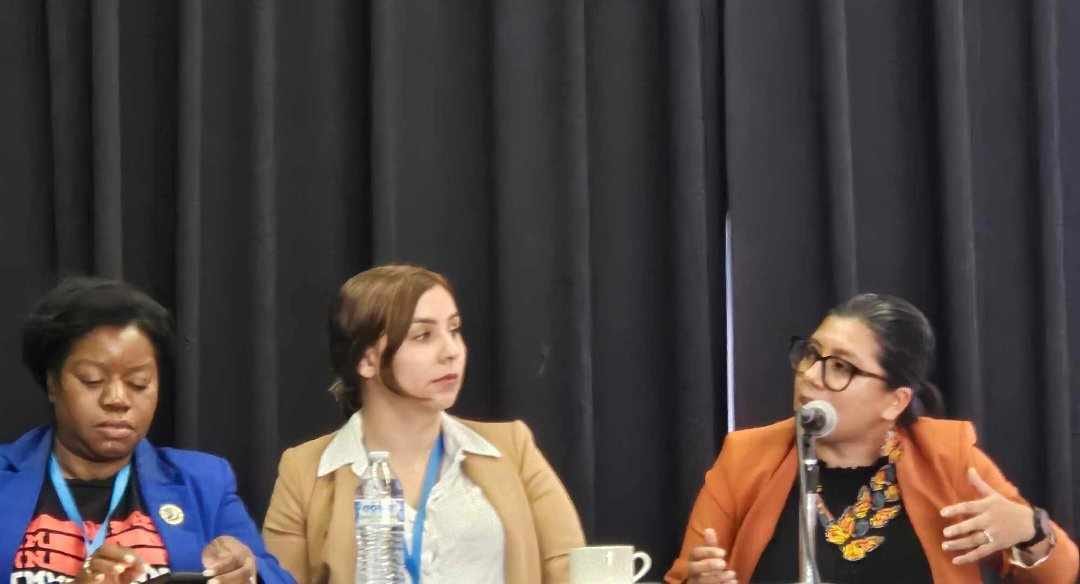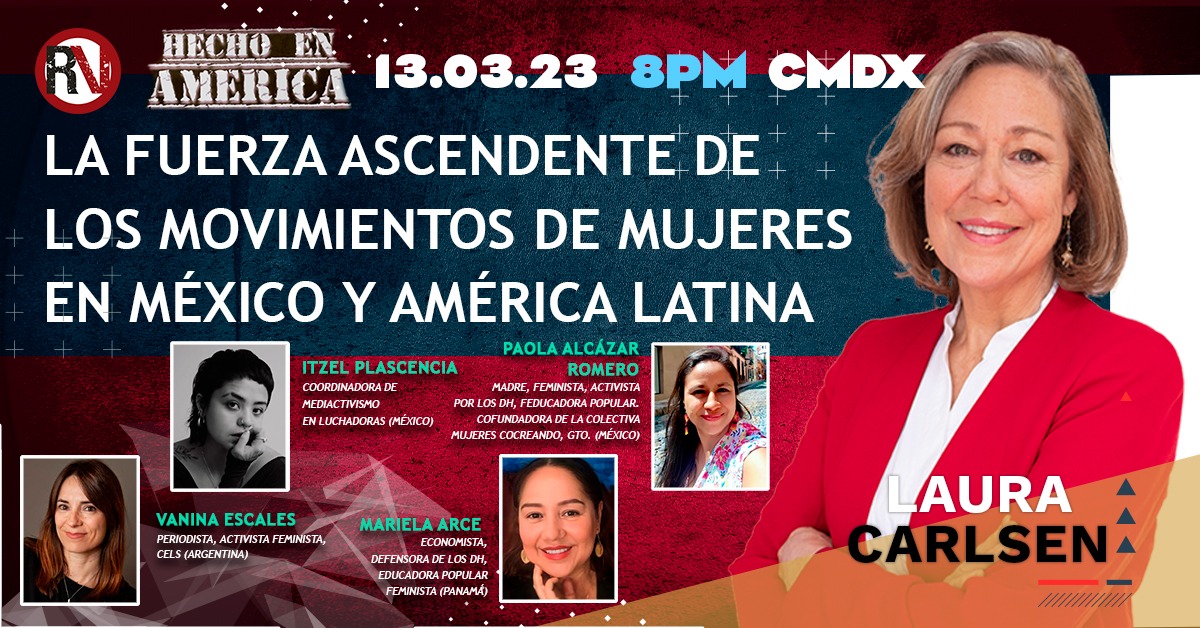p o l i c y b
r i e f
Free Trade Area of the Americas
by Karen Hansen-Kuhn | April 2001
This brief was commissioned and originally distributed
by the IRC’s Foreign Policy
in Focus (FPIF) project. It is reproduced here courtesy of FPIF. Foreign
Policy in Focus—A Think Tank Without Walls—can be accessed online
at http://www.fpif.org
Key Points
President Bush seeks to fulfill his father’s dream of creating a free trade zone of the Americas, and the timetable may be accelerated to complete negotiations by 2003.
The economic crisis in Mexico and sustained citizens’ protests have dampened enthusiasm among the general public, but not among major corporations in the United States, for the extension of free trade agreements throughout the hemisphere.
Nine negotiating groups have been working to complete a draft agreement to implement the Free Trade Area of the Americas (FTAA).
As leaders of 34 Western Hemisphere countries gather in Quebec City, Canada in April 2001, President George W. Bush hopes that the third Summit of the Americas will mark a step toward fulfilling his father’s dream of creating a free trade area stretching from Alaska to Tierra del Fuego. For a variety of reasons, this goal seems increasingly out of reach.
When, at the first Summit of the Americas in Miami in December 1994,
President Bill Clinton proposed establishing a Free Trade Area of the
Americas (FTAA) linking all of the hemisphere’s economies (except
Cuba’s) by the year 2005, he held out Mexico as the model of economic
reform and NAFTA as the model trade agreement. Just ten days later, however,
the Mexican peso experienced a massive devaluation. Stunned observers
watched as billions of foreign investment dollars flowed out of the country.
That, coupled with the austerity and adjustment conditions attached to
the bailout package financed by the U.S. Treasury and the International
Monetary Fund (IMF)—particularly the requirement that interest rates
be maintained at very high levels—led to further devaluation and
sent the Mexican economy into a deep depression.
The effects of the crisis reverberated well beyond Mexico. Subsequent
financial crises in East Asia, Russia, Brazil, and elsewhere rocked stock
markets and shook confidence in the free trade model of globalization.
The failure of the 1999 WTO Ministerial meeting in Seattle and the emergence
of intense citizen protests there and subsequently at other official meetings
related to globalization have further increased uncertainties.
The economic crises and public discontent have dampened congressional
enthusiasm for free trade agreements, as demonstrated by the defeat of
the Clinton administration’s request for fast-track authority in
1998. Since then, further efforts to introduce fast track—or, as
Bush’s Trade Representative Robert Zoellick calls it, “trade
promotion authority”—have stalemated, with a bloc of congressional
Democrats insisting that any agreement must include labor and environmental
standards and Republicans vowing to block any accord that includes a linkage.
Recently, the Business Round Table has indicated its willingness to
support the inclusion of labor and environmental issues in trade agreements.
This is happening in large part because of corporate concerns that other
trading partners, particularly the European Union, are gaining ground
in trade talks in this hemisphere. In a February 2001 report, the National
Association of Manufacturers (NAM) said: “FTAA negotiations should
be accelerated and completed by the end of 2003. Speed is important because
of the EU’s ongoing negotiations with major South American countries.”
Although the NAM does not favor enforceable labor and environmental standards,
it seems likely that the business community will push for some language
on those issues in order to gain sufficient Democratic votes to grant
the president fast-track authority and accelerate trade talks.
Many of the region’s governments believe that an FTAA would serve
to ensure sustained access to U.S. markets by reducing tariffs and preventing
trade disputes. The FTAA, like NAFTA, would also provide member countries
a seal of approval and thereby, they hope, help to stimulate foreign investment.
Brazil, in particular, continues to express ambivalence about the FTAA,
suggesting that it would be better to promote Latin American integration
first and then consider negotiations with the behemoth of the North.
Other governments, discussing such topics as market access, intellectual
property rights, and investment have been working since September 1998
to produce a draft FTAA agreement. The hemisphere’s trade ministers
are providing guidance on various proposals, including whether to accelerate
the FTAA timetable so as to complete the negotiations by 2003, a proposal
opposed by Brazil. At the Quebec City Summit, the heads of state will
provide additional political support to the FTAA process. Negotiations
have been carried out with secrecy, so whether the Latin American proposals
differ significantly from those of the United States remains a mystery.
President Bush is likely to stand firm in his plan to expand free trade
throughout the Americas, even if he is unable to gain fast-track authority
in the near future. At the same time, he has called for entering bilateral
trade pacts with individual Latin American countries, starting with Chile.
Such negotiations could divide the Latin American governments. In the
case of the Mercosur (the Common Market which includes Brazil, Argentina,
Paraguay, and Uruguay), for example, the member governments have been
negotiating as a bloc in the FTAA talks in order to gain greater leverage.
Problems with Current U.S. Policy
Key Problems
The U.S. government is promoting an approach to the FTAA based in
large part on NAFTA, despite the failure of that accord to raise living
standards.
Proposals for an “investor-state” clause in the FTAA would
give investors the power to challenge national and local laws.
The USTR is promoting a significant expansion of trade in services,
leading potentially to the privatization of such public services as
health and education.
On the eve of the Clinton administration’s departure, the U.S. Trade
Representative’s office (USTR)—in response to congressional
and international NGO pressure—published summaries of its FTAA negotiating
positions. The summaries, while giving only partial and rather vague information,
do provide a clear indication that the United States is promoting proposals
based in large part on NAFTA.
The USTR supports, for example, the controversial “investor-state”
provision contained in both NAFTA and the failed Multilateral Agreement
on Investment (MAI), as well as in a series of bilateral investment agreements
negotiated by the U.S. government. That clause, which grants corporations
legal status formerly reserved for nations, represents a significant expansion
of investors’ abilities to use trade agreements to challenge local
laws. When this sweeping procedural right to challenge governmental regulatory
actions is coupled with the broad and vaguely worded investor protections
in Chapter 11 of NAFTA, virtually all government regulation becomes a
potential target. In the past, investment agreements or national laws
have provided for compensation in cases where governments take control
of investors’ assets in the public interest. Under the MAI/NAFTA
approach, that right is broadened to include measures tantamount to expropriation,
which investors have used to demand compensation for potential lost profits
arising from regulatory changes. These challenges are decided by dispute
resolution panels meeting in secret without input from citizen groups.
In 1998, the Canadian government was forced to rescind its ban on MMT,
a gasoline additive believed to cause nerve damage, after a challenge
brought under the investor-state provision by the U.S.-based Ethyl Corporation.
Currently, the Canadian corporation Methanex is suing the U.S. government
for $970 million because of a California executive order banning the use
of MTBE, another gasoline additive associated with serious health and
environmental risks. The inclusion of such a provision in the FTAA could
effectively provide corporations with veto power over local laws and regulations.
As with NAFTA, the USTR proposals for the FTAA would result in greater
rights for investors, without establishing any corresponding responsibilities.
The USTR’s position is that investors should have the right to move
funds into and out of countries without delay—meaning that provisions
such as capital controls or performance requirements to ensure that investments
serves to promote development goals would be illegal under an FTAA.
NAFTA includes weak side-agreements on labor and the environment, in
which the three countries commit not to break their own laws on those
issues, but not even these meager measures are being considered under
the FTAA. Washington suggested even weaker language, calling for countries
to strive to ensure that labor or environmental standards are not lowered
in order to attract investment. Most Latin American governments, however,
have rejected even those ideas as inappropriate in trade talks, fearing
that any efforts to raise such standards would lead to disguised protectionism.
Instead, they have relegated discussion of those issues to unenforceable
summit declarations and action plans.
In an outline of its objectives leaked last year, the FTAA services
negotiating group stated its goal to liberalize all services in all sectors—i.e.,
commercial services such as tourism, data processing, and financial transactions,
as well as public services at all levels of government. The USTR supports
further liberalization of trade in services, promoting a top-down approach
in which all services not specifically excluded would be included in the
trade deal. This approach could lead to the privatization of such public
services as health and education—particularly if a government has
opened the door to commercialization of the services by allowing some
aspects to be subcontracted to private service providers. The USTR proposal
calls for the inclusion of energy services, something excluded from NAFTA,
and it fails to address the possible environmental consequences of such
a move.
It is clear that the U.S. is pursuing a “NAFTA plus” approach
to the FTAA, despite ample evidence of the failure of NAFTA to raise living
standards in North America. Many promises were made during the debate
over NAFTA approval: that it would, for example, result in more and better
jobs, improved environmental conditions, and more stable economies in
all three of the countries involved. None of these promises has been fulfilled.
More than 335,000 Americans have been certified as having lost their jobs
because of NAFTA, and the true number could be much higher. Most of the
jobs created in the United States have been in the low-wage service sector,
and many have been temporary. Also significant has been the increase in
the “blackmail effect:” Cornell University researcher Kate Bronfenbrenner
found that the incidence of employers using the threat of moving production
out of the U.S. in order to undermine union organizing efforts has increased
dramatically since NAFTA’s inception.
Environmental conditions, particularly in the U.S.-Mexico border region,
have deteriorated as industrial activity has increased, and the aftereffects
of the 1995 financial crisis in Mexico (particularly the collapse of the
banking sector) continue to plague that country. Massive increases in
U.S. corn exports to Mexico under NAFTA displaced hundreds of thousands
of farmers in that country. While employment did increase in the maquiladora
sector, the lack of effective labor rights protections has meant poor
wages and working conditions. Wages in the manufacturing sector in Mexico
have fallen some 9.5% since NAFTA’s onset, even though worker productivity
has increased.
Toward a New Foreign Policy
Key Recommendations
Trade negotiations should be opened up to include a broader representation
of society.
Labor, environmental, and other relevant social issues should be included
in the negotiation of trade agreements.
Investment policy should balance investors’ needs for clear rules
with the regulating needs of each country’s development strategy.
The Hemispheric Social Alliance (HSA), a network of unions, environmentalists
and women’s, family-farm, consumers’ and other progressive organizations
representing some 46 million people in the Americas is working to combine
critiques of the official FTAA process with alternative proposals. It
advocates a model of integration based on raising environmental, labor,
and other social standards throughout the hemisphere.
A critical first step is opening the FTAA process to a broader representation
of social sectors. In fact, the HSA and other citizen organizations have
been calling for greater transparency and participation in decisionmaking
on trade accords. In November 2000, more than 330 groups (all but 50 of
which from outside the U.S.) sent a letter with those demands to the head
of the FTAA Trade Negotiations Committee.
In addition to demanding the release of the FTAA draft text, the letter
criticized the existing mechanism for civil society input, the Committee
of Government Representatives on the Participation of Civil Society, that
serves as a kind of suggestion box. Submissions from civil society are
summarized and delivered to trade ministers at the periodic ministerial
meetings. During the first round of submissions, the committee received
71 letters, ranging from short notes to comprehensive proposals. These
were summarized into a five-page document delivered to the ministers some
eight months later.
According to Alternatives for the Americas: Building a Peoples’
Hemispheric Agreement , which was prepared by activists and scholars
from the hemisphere, labor, environmental, and other relevant social issues
must be included in the negotiation process. The resulting agreements
should affirm such internationally recognized accords as the International
Labor Organization Conventions, the United Nations Convention to Eliminate
All Forms of Discrimination Against Women, and the Inter-American Convention
on Human Rights. Additionally, any consensus reached on these issues must
be included within the text of the FTAA agreement, not in unenforceable
side agreements.
Language regulating investments should also be changed to balance investors’
needs for clear rules with the development objectives of national economies.
Governments should retain the right to impose performance requirements
on foreign investors and should be allowed to protect small- and medium-scale
producers and other key economic sectors in order to promote national
development priorities. Each country’s right to maintain food and
nutritional security (for example, by excluding basic grains from trade-liberalization
measures) should also be guaranteed. Likewise, governments must be free
to regulate without having to compensate foreign investors for “economic
harms.” Until such time as the substantive rules reflect greater
balance between granting broad new rights to corporations and imposing
concomitant responsibilities, the investor-state mechanism has no place
in the FTAA.
The Alternatives document outlines a comprehensive approach to
achieving a different kind of trade agreement. It is a central organizing
paper of the Hemispheric Social Alliance. Even were the FTAA defeated,
or NAFTA repealed, many of the existing rules on corporate-led globalization
would remain in place. The Alternatives document offers a vision of what
a fundamentally different kind of economic integration could be.
In its recent statement on the FTAA, the AFL-CIO issued a challenge.
“An acceptable hemispheric agreement must not simply replicate the
failed trade policies of the past, but must incorporate what we have learned
about the problems and weaknesses of the current rules,” the labor
federation’s Executive Council said. “The success or failure
of any hemispheric trade and investment agreement will hinge on governments’
willingness and ability to develop an economic integration agreement that
appropriately addresses all of the social, economic, and political dimensions
of trade and investment, not just those of concern to corporations.”
Unions and citizen groups in other countries in the Americas have expressed
similar concerns. They will continue to press for a different kind of
economic integration than that embodied in NAFTA or the current FTAA proposals,
one designed to promote equitable and sustainable development for all
of the peoples involved.
Karen Hansen-Kuhn < khk@developmentgap.org >
is trade program coordinator at The Development GAP and international
coordinator of the Alliance for Responsible Trade.
Sources for More Information
Organizations
Alliance for Responsible Trade
927 15th Street NW, 4th Floor
Washington, DC 20005
Voice: (202) 898-1566
Fax: (202) 898-1612
Email: karen@art-us.org
Web: http://www.art-us.org/
Contact: Karen Hansen-Kuhn
Center for International Environmental Law
1367 Connecticut Avenue NW, Suite 300
Washington, DC 20036
Voice: (202) 785-8700
Fax: (202) 785-8701
Email: sporter@ciel.org
Web: http://www.ciel.org/
Contact: Stephen Porter
Common Frontiers
15 Gervais Drive, Suite 305
Don Mills, ON M3C 1Y8
Canada
Voice: (416) 443-9244
Fax: (416) 441-4073
Email: comfront@web.ca
Web: http://www.web.net/comfront/
Contact: Patty Barrera
Institute for Policy Studies
733 15th Street NW, Suite 1020
Washington, DC 20005
Voice: (202) 234-9382
Fax: (202) 387-7915
Email: saraha@igc.org
Web: http://www.ips-dc.org/
Contact: Sarah Anderson
Red Chile por un Comercio Justo y Responsable
Seminario 774, Nuñoa
Santiago, Chile
Voice/fax: (562) 341-6597
Email: alianzacj@ctcinternet.cl
Web: http://www.comerciojusto.terra.cl/
Contact: Coral Pey
Red Mexicana de Acción frente al Libre Comercio
Calle Godard, Col. Gpe. Victoria
México, DF, 07790 México
Voice/fax: (525) 355-1177
Email: rmalc@laneta.apc.org
Web: http://www.rmalc.org.mx/
Contact: Hector de la Cueva
Publications
Alliance for Responsible Trade, America’s Plan for the Americas:
A Critical Analysis of the U.S. Negotiating Positions on the FTAA ,
February 2001.
Anderson, Sarah, John Cavanagh and Thea Lee, A Field Guide to the
Global Economy , Institute for Policy Studies, 2000.
World Wide Web
Hemispheric Social Alliance
http://www.asc-hsa.org/
Official FTAA site
http://www.ftaa-alca.org/
Summit of the Peoples of the Americas
http://www.peoplessummit.org/
United States Trade Representative
http://www.ustr.gov/
This brief is a product of the Interhemispheric Resource
Center’s Global Affairs
and Americas Programs .
All rights reserved.
Recommended citation: "Free Trade Area of
the Americas ," Foreign Policy In Focus Policy Brief, vol. 6, iss.
12 (Interhemispheric Resource Center/Institute for Policy Studies, April
2001).
Web location: http://www.americaspolicy.org/briefs/2001/v6n12ftaa.html



